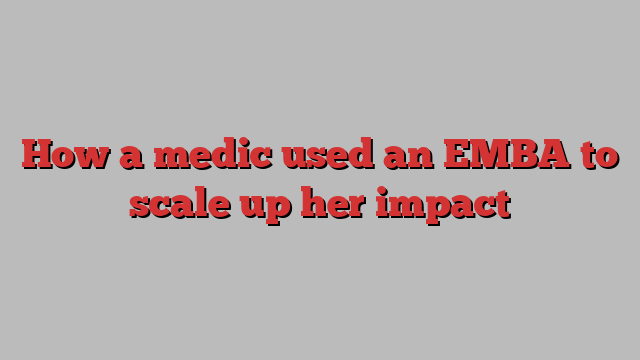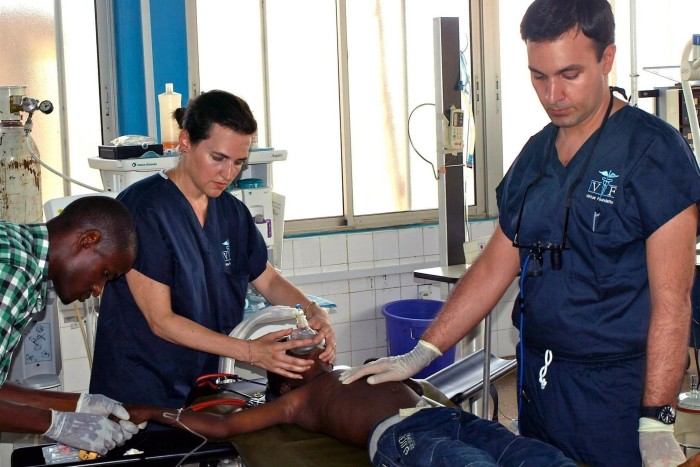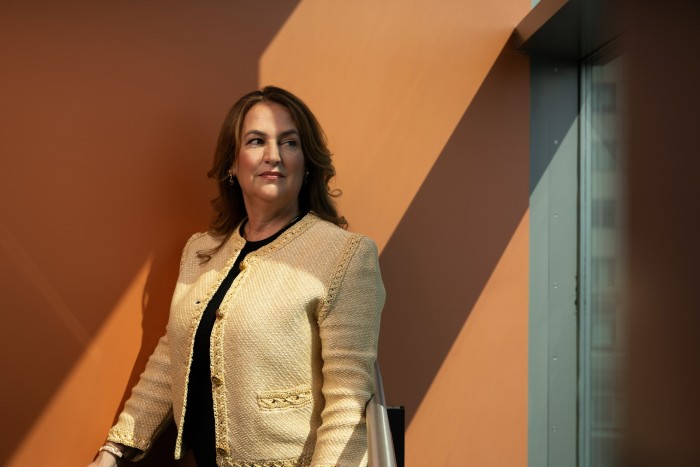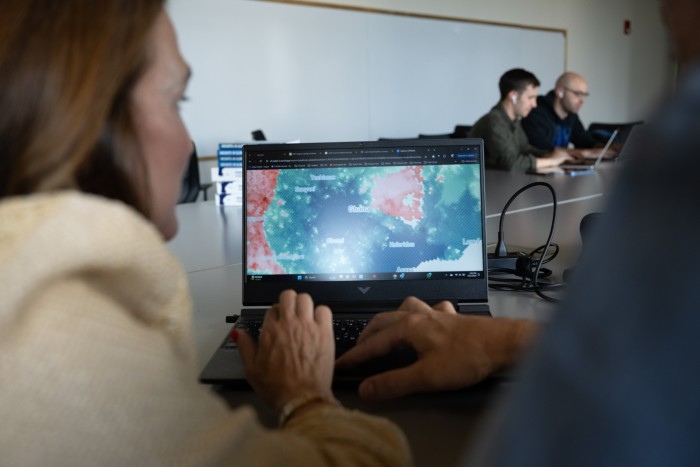
Joan LaRovere’s CV is complicated, spanning medic, non-profit co-founder, investor, start-up adviser and teacher.
Fundamentally, she is a doctor who specialises in paediatric cardiac intensive care. But LaRovere is not focused only on the transformative power of medicine — she is now using data and technology to get help to where it is needed most. That scaling up of impact was fuelled by a return to study, at business school.
LaRovere’s work has spanned continents. With dual American and British citizenship, she studied for her undergraduate degree at Harvard University, before taking a masters at the University of St Andrews in Scotland, then returning to the US for medical school.
A fellowship took her to Great Ormond Street Hospital for Children in London before moving across the capital to the Royal Brompton, where she eventually became the director of the paediatric intensive care unit, in 2008.
“They really invested in me,” she says of the Brompton. Alongside her medical role, she enjoyed other opportunities including the Windsor Leadership programme for emerging leaders from a range of sectors and embarking on “a kind of mini MBA” at Imperial College London.
In 2002, while on maternity leave with her first child, LaRovere helped to co-found Virtue Foundation, a non-profit that delivers healthcare to underserved populations and uses data science to address global health challenges.

LaRovere realised that to create change, build new opportunities and deliver what patients need, “you have to understand the finance structure, the go-to-market, the product, the build,” she says. “There’s all these other things that go into it besides the science and the medicine.”
Her awareness of the broader picture may have formed as she was growing up — “I’m a businessman’s daughter,” she notes — but it was germinated by her time at the Brompton and Virtue Foundation. So, when Boston Children’s Hospital, where she had started her career, asked her to re-join the team in 2011, she was ready with a deal: she wanted support — in funding and time — to study for an Executive MBA.
In 2014, she started the course at MIT Sloan School of Management, across the Charles River in Cambridge, Massachusetts. LaRovere applied to just one school. It was a good fit — from the healthcare, tech and entrepreneur elements to the university’s motto, mens et manus (mind and hand), and that of the school: “Ideas made to matter”.
“It really is embedded [that] you should be looking at big ideas, things that are important for the world, things that add value to people,” she says. “And you also have to know how to build it.”

The other reason she chose MIT was data science and AI. She had seen “how healthcare was becoming a data business”. But she also had a project at Virtue Foundation that would lead her deep into the sector. More than a decade ago, Dr Ebby Elahi, an oculofacial surgeon and professor at the Icahn School of Medicine at Mount Sinai, New York, had an idea. It was only when doctors got on the ground at medical missions that they really understood the situation. That creates challenges and inefficiencies.
Elahi wanted Virtue Foundation to use data science and AI to get a more accurate picture of healthcare needs on the ground in low- and middle-income countries, so that volunteer surgeons and doctors could make better decisions about where to go to help the most people.
“And that started us on this whole journey of granular data and the use of machine learning to make the invisible visible,” explains LaRovere.
After much work, a product is set to launch in early 2025. It is an AI platform that shows the global health ecosystem — such as healthcare facilities and NGOs — in 72 low- and middle-income countries. Alongside that, the tool overlays other information such as population or road networks, including the ability to see a street-level view.
Executive MBA Ranking 2024

Read the ranking and report
“You can start to see things more clearly on the ground,” she says, for example locating “medical deserts” where there is a concentration of people without access to care.
The tool also uses AI as a “lens over the web”. Models collate data (such as information from social media, blogs or news articles), tagging it so users can build a picture of a situation, and keeping the data refreshed. “Oftentimes, that information is hidden in plain sight,” says LaRovere.
The platform will be free to use, and will initially be available to physicians and other healthcare practitioners to help them find where they can best use their skills. It will allow searching by speciality or volunteer opportunities.
“An incredible amount of work from so many people has gone into the building of this,” she says. “But you can see how an EMBA would be something that helped bring all the right skills and partners and just so much [else together].”
Part of that was studying AI, big data and machine learning. But it was also the connections she made with classmates and professors. For example, she was able to use the MIT network to create partnerships with companies such as Databricks, DataRobot and Carto — which have all helped bring the platform to life.

The EMBA has given LaRovere a “broad skillset”, adding knowledge about topics including entrepreneurship, healthcare finance and systems thinking. Indeed, the ability to impact someone’s life as a doctor is “unparalleled”, she says. “But what I think MIT has allowed me to do is both do that at the individual level, but also do it at scale.”
That ability to scale will continue with the foundation and her latest role as the associate chief medical officer for transformation at Boston Children’s Hospital. She is the clinical lead looking at a range of challenges such as the future workforce, embedding AI into workflows, and translating research into clinical products.
The role brings together all the strings to her bow, while keeping true to the original caring mission. “Healthcare is in so much transition, you need to be able to think in a different way — and I think MIT really gave me the skillset to be able to think in a different way,” she says.
CV
2011-present Boston Children’s Hospital. Currently associate chief medical officer for transformation, and a senior staff physician in cardiac intensive care
2023-present Board member, LifeMD
2021-present Healthcare operating partner, iSelect Fund
2016-present Various roles at the Martin Trust Center for MIT Entrepreneurship including professional adviser at the Delta V Summer Accelerator
2016-present Instructor, course director, visiting lecturer, and mentor on courses at MIT Sloan and the MIT Media Lab on healthcare, biotech, finance and AI
2011-present Assistant professor of paediatrics at Harvard Medical School
2002-present Co-founder, president and board member, Virtue Foundation
2000-2011 Consulting physician, Bupa Cromwell Hospital
1999-2011 Various roles at Royal Brompton Hospital including chief of the paediatric intensive care unit
1997-1999 Fellow of paediatric intensive care and cardiac intensive care, Great Ormond Street Hospital
1993-1996 Resident physician, Boston Children’s Hospital
Considering an EMBA?
Join our free online event, Spotlight on the Executive MBA, on Wednesday October 16. Register at emba.live.ft.com